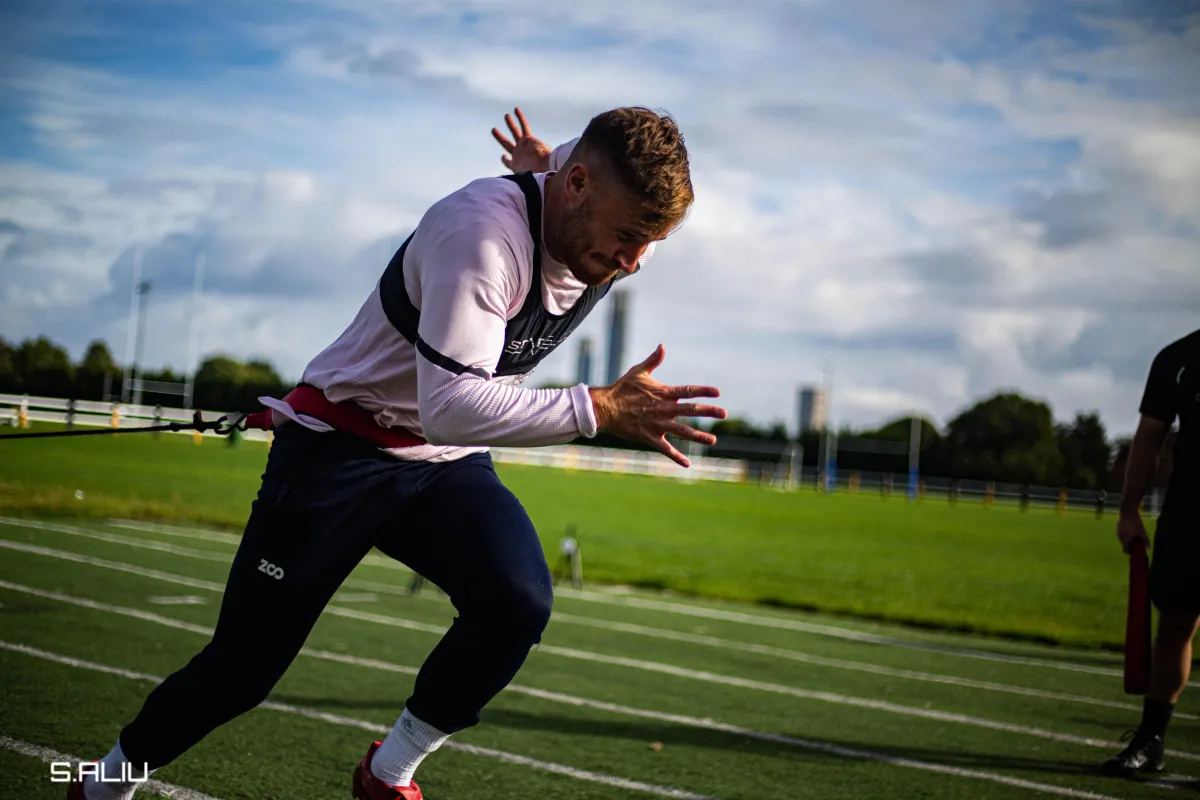ABOUT SAM PORTLAND
From Player to Coach to Founder....
Sam Portland started like any coach as an athlete himself. Being undersized and "too small" Sam was released from an english premiership academy but soon used his lightening speed to race up the ranks in english rugby.
After a catastrophic broken leg injury in 2007 on the day is childhood team came to scout him. His dream of being a professional athlete was over.
Like most athletes he set his sights on coaching and during his rehabilitation journey he found the love to coaching and building speed. Starting with himself.
Attaining his degree and masters whilst training athletes in his parent shed and parks he landed his break break in the pro's with London Wasps.
After making a name for himself as a coach who's unique methodology specifically builds some of the fastest team sport athletes in the world.
The mission of Speed By Sportland Is simple and clear!
IGNITE A SPEED REVOLUTION AND IT STARTS WITH YOU

Join the hall of fame of Speed By Sportland Clients

Check out Sam in action with NFL Player Alex Gray
Learn how to improve your speed with our fantastic articles.

5 Resisted Speed Training Variations to Enhance Speed on the Rugby Field: The Power of Resisted Speed Training
5 Resisted Speed Training Variation to Enhance Speed on the Rugby Field: The Power of Resisted Speed Training
Introduction
In the world of rugby, speed is a game-changer. The ability to sprint past opponents, break away for a try, and cover ground quickly can make all the difference in a match. As a coach, you're constantly on the lookout for training methods that can take your players' speed to the next level. One approach that has gained popularity is resisted speed training. In this blog post, we'll explore the benefits and considerations of incorporating resisted speed training methods into your coaching program. Specifically, we'll delve into resisted sprints with resistance bands, sled sprints, hill sprints, tow sprints, and parachute sprints.
Keywords: Speed training for rugby, rugby speed training, speed training program, resisted speed training

1. Resisted Sprints with Resistance Bands:
Resistance bands are a versatile tool that can be incorporated into sprint training to improve acceleration and power during the drive phase. When athletes sprint with resistance bands, they must exert more force, which helps develop better sprint mechanics and strength. Additionally, resistance bands provide a controlled environment for strength development without excessive stress on the joints. It's essential to ensure proper anchoring and setup to maximise the benefits of this training method.
2. Sled Sprints:
Sled sprints involve athletes sprinting while pulling a sled loaded with weights. This method targets acceleration and stride length, as athletes focus on generating power in the lower body during the initial phase of sprinting. The sled provides natural resistance without significantly altering sprint mechanics. Coaches can adjust the weight on the sled to offer progressive overload for athletes of different levels.
3. Hill Sprints:
Hill sprints are an excellent way to develop strength and power in the lower body, particularly the glutes and hamstrings. As athletes run uphill, they must push against gravity, enhancing their stride length and running mechanics. This natural form of resistance can be an effective way to improve sprint performance. However, coaches should be mindful of excessive downhill sprints, which may lead to over striding and increased injury risk.
4. Tow Sprints:
Tow sprints involve one athlete sprinting while another provides resistance by pulling or pushing against them. This method enables sport-specific resistance during sprinting and fosters cooperation and competition between athletes. Tow sprints can be a fun and engaging way to enhance speed and power. However, coaches should consider practicality, as having a second athlete available to provide resistance might not always be feasible.
5. Parachute Sprints:
Parachute sprints involve athletes sprinting with a parachute attached to their backs, creating drag and resistance. This method helps improve stride length and power development as athletes must drive harder despite the added resistance. Parachute sprints are easy to use and portable, making them suitable for various training settings. Coaches should start with low-resistance parachutes and gradually progress to avoid compromising running mechanics.
Conclusion:
Resisted speed training can be a valuable addition to your rugby coaching program, providing athletes with the tools to enhance their speed and power on the field. Whether you choose to use resistance bands, sleds, hills, tow sprints, or parachutes, it's crucial to balance the training and monitor athletes' progress. Proper planning and execution will help optimise the benefits of resisted speed training while minimising the risk of injury or compromised running mechanics. By incorporating these training methods strategically, you can unleash the full potential of your players' speed and make a significant impact on the rugby pitch.

